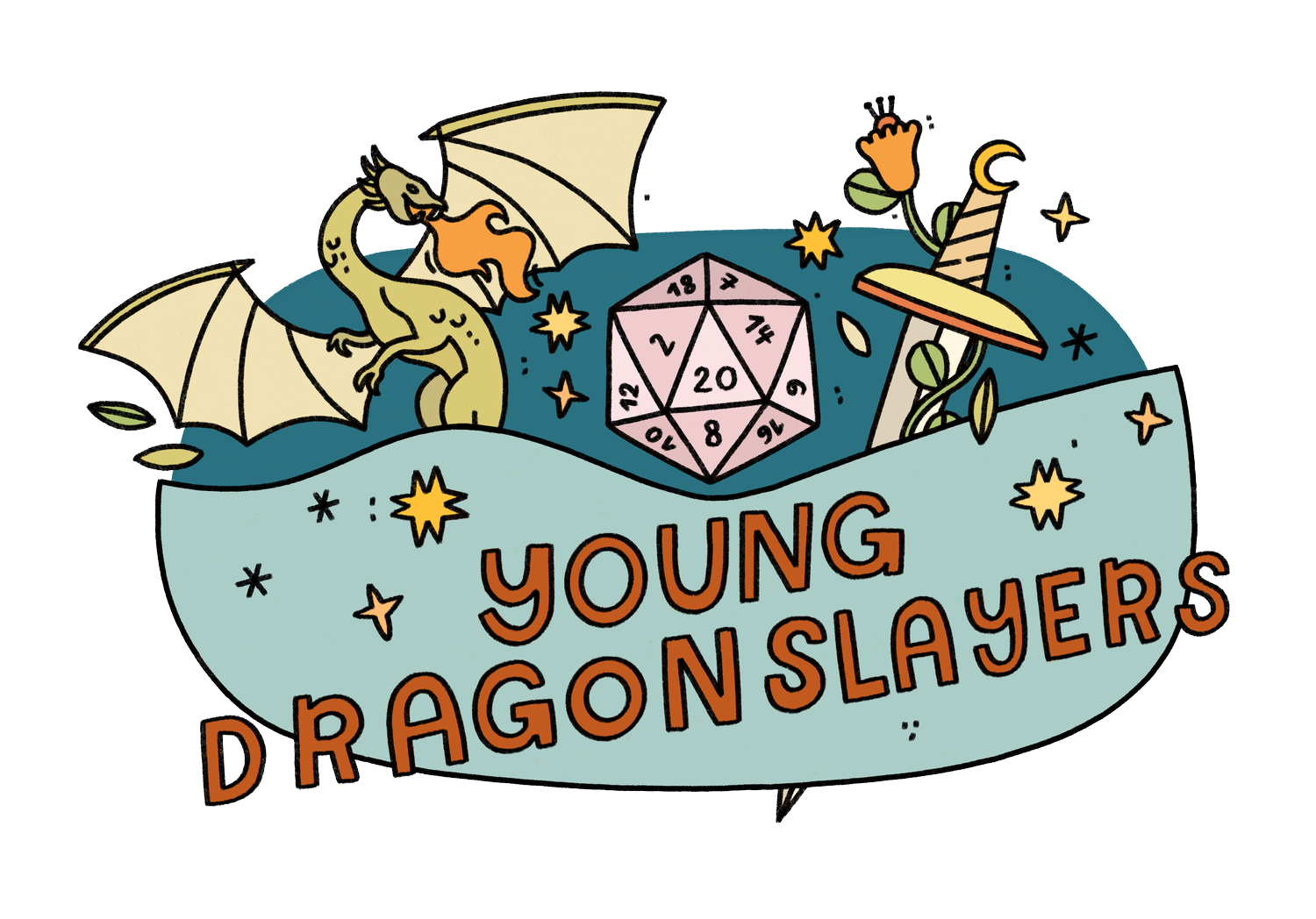How to Turn Your D&D Campaign Into a Novel for National Novel Writing Month
There are a multitude of reasons people love playing Dungeons & Dragons. But one that I see over and over, among players of all ages, is the way you can tell a story through the game. By creating characters, describing actions, rolling dice, and going on adventures, players and the Dungeon Master can build a story together! So many of my players have surprised and impressed me with how much effort they put into this: making custom character art, writing pages-long backstory description, or filling out personality questionnaires from the perspective of their characters. Some ambitious players have even recorded their characters’ adventures in the form of a book! If you’ve ever considered making this leap, now is the perfect time; November is National Novel-Writing Month (a.k.a. NaNoWriMo), where thousands of writers of all ages make it their goal to write a novel-length story in thirty days. NaNoWriMo even established a whole organization to give writers the tools, structure, community, and encouragement they need to complete this challenge. If you feel you’re up to the task, read on to learn how you, too, can create a novel from your Dungeons & Dragons (D&D) campaign!
Pick a Perspective for Your Story
Every book you’ve ever read has a perspective: the point of view from which the story is told. A “third person” point of view uses pronouns like “he,” “she,” or “they,” to talk about the characters. Here’s an example using my half-elf paladin, Alana: “Alana’s armor gleamed in the sun. She mounted her steed and drew her war-hammer, ready to battle alongside her companions.” A “first person” point of view uses pronouns like “I” “my” and “we” to talk about the narrator. Here’s another Alana example: “My hammer was covered in green goo from the zombie horde. We had a hard battle that day; I noticed our wizard looked weary, so I reached out my hand to heal his wounds.” In both third-person and first-person stories, the reader often sees what a character is feeling, but in first-person stories, they get a closer look inside of the narrator’s head. Consider a third-person perspective if you’d like to focus on the story of the group and a first-person perspective if you’d like to focus on the story of your character in particular.
Pick a Beginning, Middle, and End
Lots of stuff, from hilarious to action-packed to heart-wrenching, happens in a D&D campaign. Much of it is probably worth including in your novel! But if you want your readers to be able to focus on and follow the story, it’s best to pick one main goal for your characters. In The Lord of the Rings, the Fellowship spends time with Tom Bombadill and fights their way through Shelob’s lair, but their main goal is to get the Ring to Mordor. In Star Wars: Episode IV, Luke tracks down two rogue droids and rescues a princess, but the main goal is to blow up the Death Star. In the tween group I’m running for Young Dragonslayers™, my players have rescued a captured bird and shared gold with hostages, but their main goal is to track down an inventor who used his machines to harm their dragon friend.
All of these stories follow a framework called the three-act structure, where each story has a beginning, middle and end that focus around the path to reach this goal.
Beginning (Act I)
The beginning of the story introduces the characters and their situation; it often includes an “inciting incident” to show the characters, and the reader, what the goal is. In The Lord of the Rings, Frodo learns about the One Ring and the Fellowship is formed to bring it to Mordor. In Star Wars, Luke learns of the plight of Leah and the Rebellion, meets Obi-Wan Kenobi, and decides to leave his farm to stop Darth Vader. In my campaign, the player characters learned of a mysterious man with a metal arm who attacked their friend, gathered information about the mine where the man was hiding, and set off for retribution.
Middle (Act II)
The middle of the story develops the characters and gives them challenges to overcome as they reach their goal; it often includes a “crisis” at the midpoint where the characters must decide whether they should keep going. In The Lord of the Rings, the Fellowship and their friends fight to protect the Ring from Saruman at the Battle of Helm’s Deep. In Star Wars, Luke must team up with Han Solo to break out Princess Leia and escape Darth Vader and his Stormtroopers. In my campaign, the player characters fought guards that had taken over the city near the mine, met a gang of Resistance leaders who were fighting the metal-armed man and his cronies, and set off to the mine to stop him.
End (Act III)
The end of the story is when the characters finally achieve their goals; it often includes a “climax,” a big moment after which the plot is resolved. In The Lord of the Rings, the Ring is finally destroyed, and Frodo can return to the Shire. In Star Wars, Luke learns to trust the Force and blows up the Death Star, keeping the Rebellion safe. In my campaign, my player characters will traverse the challenges of the mine to face the metal-armed man and, perhaps, the inventions he has created (no spoilers, the game is still going)!
When you’re considering writing your novel, pick one main goal that the main character (or characters) is aiming towards; this can be anything from defeating an ancient dragon to getting the cute bard in the tavern to go on a date with you. Once you have that in mind, think of story beats for the Beginning, Middle, and End, and use these as an outline to fit the rest of the story around.
Get to Writing for NwNoWriMo!
Participants in NaNoWriMo set a goal for the number of words or pages they want to write in November. Before you get intimidated, remember that you only have to do one day at a time, plus you’ve already got a great campaign you can use for inspiration. Young writers can also access some super helpful tools and resources in NaNoWriMo’s Young Writers Program, including workbooks, videos, forums, and writing dashboard.
When writing, try to let go of your worries about perfect grammar or crafting the best, most brilliant story possible. Often, trying to do this gets writers stuck, and they barely end up writing at all! Part of the point of NaNoWriMo is to write a whole bunch of words without overthinking them, to get your story down and show yourself, and the world, that you can! Do your best to find a writing form that works for you (on paper, on your phone’s Notes app, on your Chromebook), and try to set aside a bit of time every day to write in a working environment that you’re comfortable in (think about noise levels, light, and interruptions).
If You Get Writer’s Block
There may be a point during your novel when you get stuck or feel like you’ve run out of things to say. Worry not! Many writers before you have dealt with the exact same thing. You can add an interesting challenge for the characters to deal with, even if it didn’t happen in your original campaign (NaNoWriMo’s “Dare Machine” can help with this). If you’d prefer to stick to what happened in your D&D campaign, ask your fellow players what they remember; you’ll be surprised what they noticed while you were busy looking at your spell list!
There’s also no rule that says you have to write every scene in the same order it will be in your final book. If you know of a scene that will be happening later, write that one instead; you’ll reach your goal for the day and maybe even get the creative flow you need to go back to the part that had you stuck in the first place. You can also go out on a limb and write something completely different. Perhaps pick a scene from your perspective character’s past that might be relevant to what’s happening in the present, like the day Alana told her parents that she was leaving their noble lifestyle to serve a deity as a paladin. Perhaps spend some time focusing on describing the narrator, the party, and the place that they’re in, like describing what Alana’s dwarven friend looked and felt like when a Beholder turned him to stone. Or maybe you can write a scene from a different perspective, like the powerful lich Acerack that had heard of Alana’s exploits. This can potentially reveal something to the reader or foreshadow something that happens later.
Have Fun Writing Your Novel!
Most importantly, both when writing your story or playing it out with your friends, you should be having fun! Tons of great stories come from writers and players like you with creative ideas and the desire to share them. Here at Young Dragonslayers™, Dungeon Masters like me run D&D games for creative tweens and teens. You can create your own character, go on adventures with groups of other players your own age, and learn how to work together to tell awesome stories. If you’d like to play, sign-ups for our winter games will be opening soon. And you write the story of your game, tell us! We love seeing the creativity of D&D enthusiasts, and you might inspire someone else to do the same.






